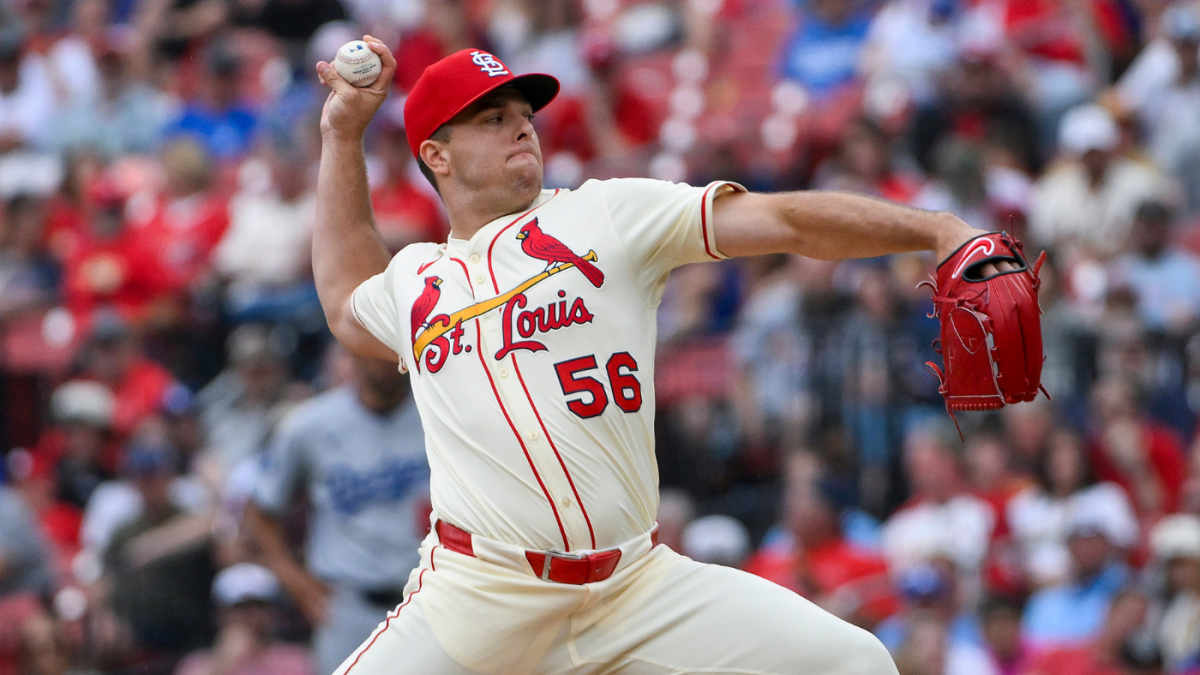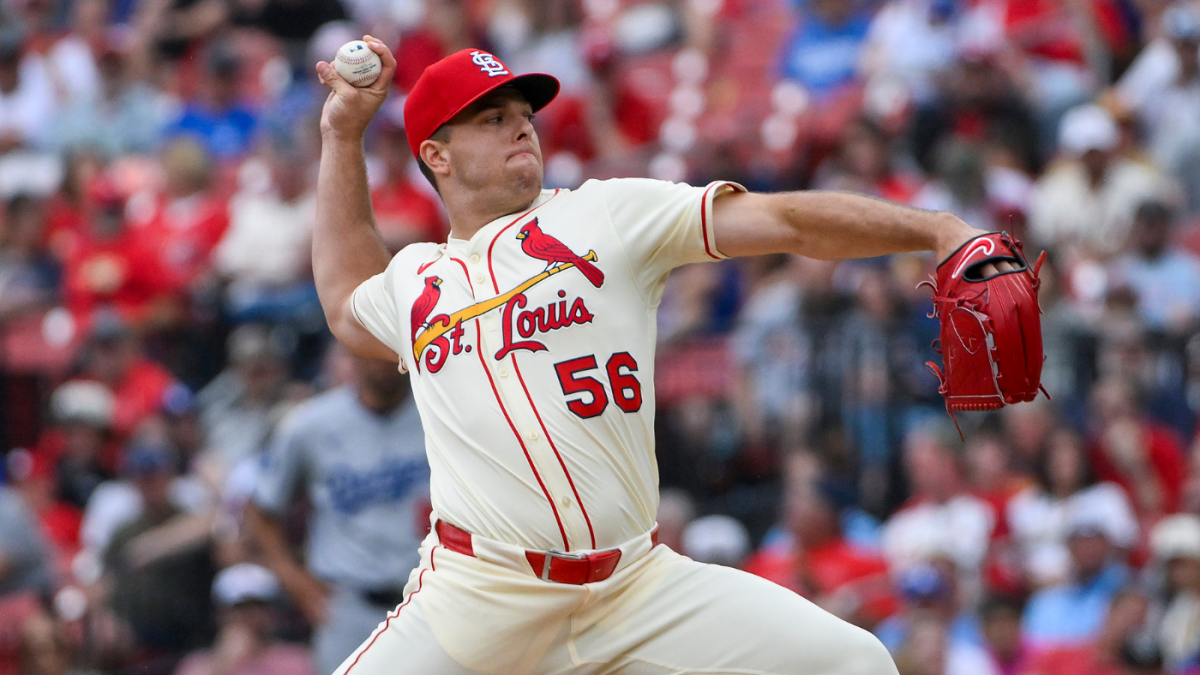The St. Louis Cardinals’ 2025 Trade Deadline: A Strategic Crossroads
Introduction: A Team at a Tipping Point
The St. Louis Cardinals, a franchise synonymous with consistency and excellence, stand at a critical juncture as the 2025 MLB trade deadline approaches. After seasons that failed to meet the high expectations of their passionate fanbase, the Cardinals face a complex decision-making process. They must balance immediate playoff aspirations with long-term roster construction, a challenge that will define the trajectory of the franchise for years to come. This analysis explores the Cardinals’ strategic options, potential trade scenarios, and the implications of their decisions on both the present and future of the organization.
The Contender Conundrum: To Buy or to Sell?
The Cardinals’ current position in the National League presents a paradox. Some analysts position them as legitimate contenders, while others argue they are stuck in the “messy middle”—neither good enough to compete for a championship nor bad enough to justify a full-scale rebuild. This ambiguity creates a strategic dilemma for General Manager John Mozeliak and his front office.
The Case for Buying
If the Cardinals believe they have a genuine chance at postseason success, they may opt to acquire key pieces to bolster their roster. Potential targets include:
– Starting Pitching: A veteran arm like Merrill Kelly from the Arizona Diamondbacks could stabilize a rotation that has struggled with consistency.
– Right-Handed Bat: The Cardinals’ lineup has been overly reliant on left-handed hitters. A right-handed bat with defensive versatility could address a significant weakness.
– Bullpen Depth: Even if they retain Ryan Helsley, adding another reliable reliever would enhance their late-inning flexibility.
However, pursuing these acquisitions would require parting with valuable prospects, potentially mortgaging the future for a short-term playoff run. This approach carries significant risk, as the Cardinals would need to ensure that any additions significantly improve their chances of winning a championship.
The Case for Selling
Alternatively, the Cardinals could adopt a more future-focused strategy by trading veteran players for younger, controllable assets. This approach would allow them to retool their roster while maintaining competitiveness in the near future. Potential trade candidates include:
– Ryan Helsley: The All-Star closer is the Cardinals’ most valuable trade asset. His elite fastball and proven performance make him highly sought after, potentially netting a significant return in prospects.
– Nolan Arenado: While moving Arenado would be a monumental decision, it could bring back a substantial package of young talent. However, his hefty contract and star status make him a challenging trade piece.
– Phil Maton: A less impactful but potentially useful trade piece for teams seeking bullpen depth.
This strategy would prioritize long-term success over immediate gratification, allowing the Cardinals to build a sustainable contender rather than chasing fleeting playoff appearances.
The Middle Ground: A Hybrid Approach
A third option for the Cardinals is to adopt a hybrid strategy, making selective additions while also trading veterans for prospects. This approach would allow them to remain competitive in the short term while also building for the future. For example, they could trade a veteran like Arenado for a package of prospects and use the acquired talent to address immediate needs through subsequent trades or free agency.
The Mozeliak Factor: Legacy on the Line
This trade deadline is particularly significant for John Mozeliak, who is set to step down from his role as President of Baseball Operations after the season. Mozeliak’s tenure has been marked by both successes and challenges, and his handling of this trade deadline will shape his legacy with the Cardinals.
The Pressure to Perform
Mozeliak faces immense pressure from various stakeholders, including ownership, the fanbase, and his own front office advisors. His decisions will be scrutinized not only for their immediate impact but also for their long-term implications. A series of shrewd trades could solidify his reputation as a savvy executive, while ill-advised moves could tarnish his legacy and leave the Cardinals in a difficult position.
The Need for a Clear Vision
To navigate this pressure, Mozeliak must have a clear vision for the future of the franchise. He must balance the desire for immediate success with the need to build a sustainable contender. This requires a delicate balancing act, as well as a deep understanding of the team’s strengths, weaknesses, and long-term goals.
Addressing Needs: Potential Acquisitions
If the Cardinals decide to be buyers at the trade deadline, they will likely target specific areas of need. These include:
Starting Pitching
The Cardinals’ rotation has been inconsistent this season, and adding a veteran starter could provide a much-needed boost. Potential targets include:
– Merrill Kelly (Arizona Diamondbacks): Kelly has proven to be a reliable starter with a strong track record. His addition could stabilize the Cardinals’ rotation.
– Other Potential Targets: The Cardinals could also explore options like Tyler Mahle (Minnesota Twins) or Jordan Montgomery (Texas Rangers), depending on their availability and the asking price.
Right-Handed Bat
The Cardinals’ lineup has been overly reliant on left-handed hitters, making them vulnerable to left-handed pitching. Adding a right-handed bat with defensive versatility could address this weakness. Potential targets include:
– Cedric Mullins (Baltimore Orioles): Mullins is a versatile outfielder with a strong bat and excellent defensive skills. His addition could provide a significant boost to the Cardinals’ lineup.
– Other Potential Targets: The Cardinals could also explore options like Bryan Reynolds (Pittsburgh Pirates) or Kyle Tucker (Houston Astros), depending on their availability and the asking price.
Bullpen Depth
Even if the Cardinals retain Ryan Helsley, adding another reliable reliever would enhance their late-inning flexibility. Potential targets include:
– David Robertson (New York Mets): Robertson is a proven closer with a strong track record. His addition could provide a significant boost to the Cardinals’ bullpen.
– Other Potential Targets: The Cardinals could also explore options like Raisel Iglesias (Miami Marlins) or Kenley Jansen (Boston Red Sox), depending on their availability and the asking price.
The Balancing Act: Navigating the “Runway”
One of the recurring themes in the reports surrounding the Cardinals is the idea of balancing “runway.” This refers to the need to balance short-term competitiveness with long-term planning. The Cardinals don’t want to completely tear down their roster and enter a prolonged rebuild, but they also can’t afford to mortgage their future for a fleeting chance at the playoffs.
The Importance of Patience
Finding the right balance will require patience and a clear understanding of the team’s long-term goals. The Cardinals must resist the temptation to make impulsive decisions based on short-term results. Instead, they should focus on building a sustainable contender that can compete for championships year after year.
The Role of Prospects
Prospects play a crucial role in the Cardinals’ long-term success. The organization must be willing to part with valuable prospects to acquire key pieces, but they must also be cautious not to deplete their farm system. This requires a delicate balancing act, as well as a deep understanding of the value of their prospects and the potential returns from trades.
Conclusion: A Crossroads Moment
The 2025 trade deadline represents a pivotal moment for the St. Louis Cardinals. The decisions they make in the coming weeks will have a profound impact on the future of the franchise. Whether they choose to be buyers, sellers, or something in between, the Cardinals must approach the trade deadline with a clear strategy and a focus on long-term success.
The Cardinal’s Choice: Fly High or Grounded Ambition?
Ultimately, the Cardinals’ fate rests on their ability to make smart, informed decisions that align with their overall vision for the future. Will they seize the opportunity to build a sustainable contender, or will they succumb to the temptation of short-term gains? Only time will tell, but one thing is certain: the baseball world will be watching closely as the Cardinals navigate this critical crossroads. The choices made now will echo through the halls of Busch Stadium for years to come, shaping the legacy of a franchise that has long been a beacon of excellence in Major League Baseball.












